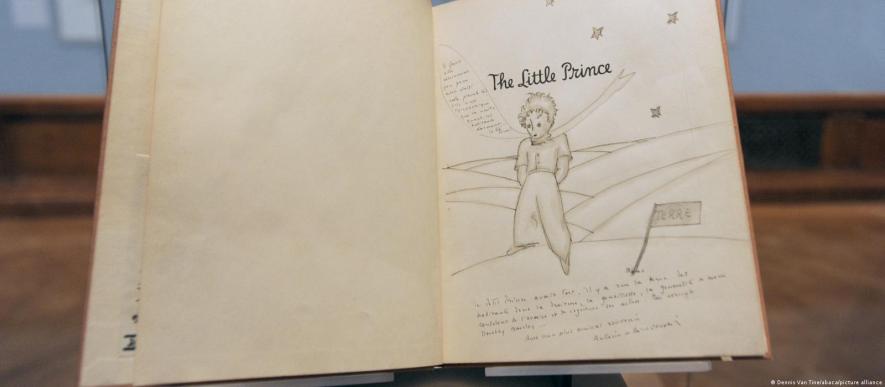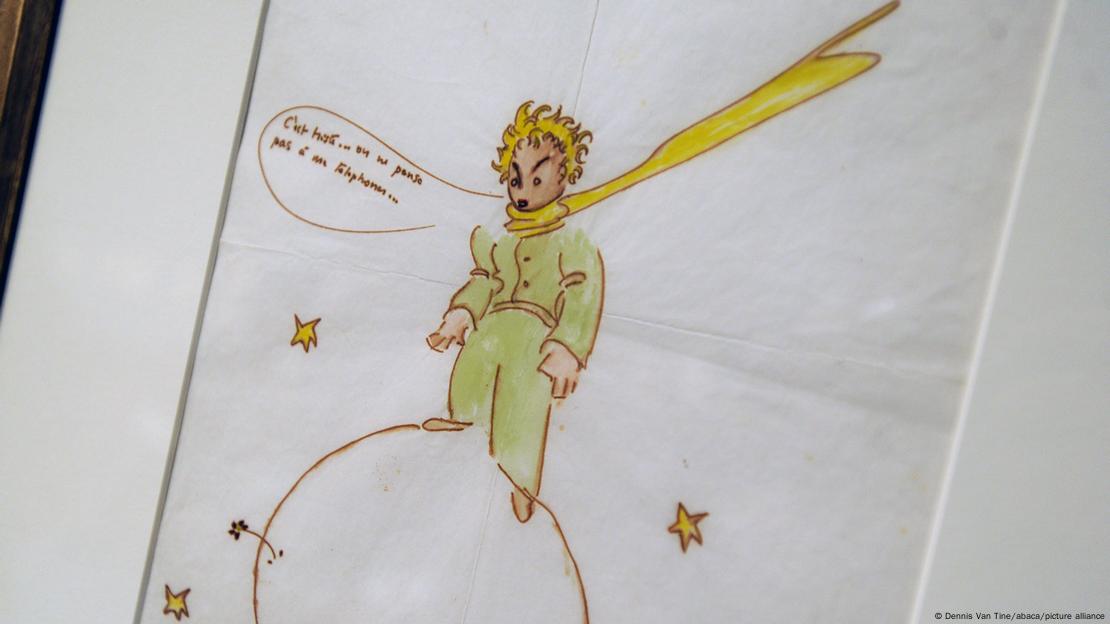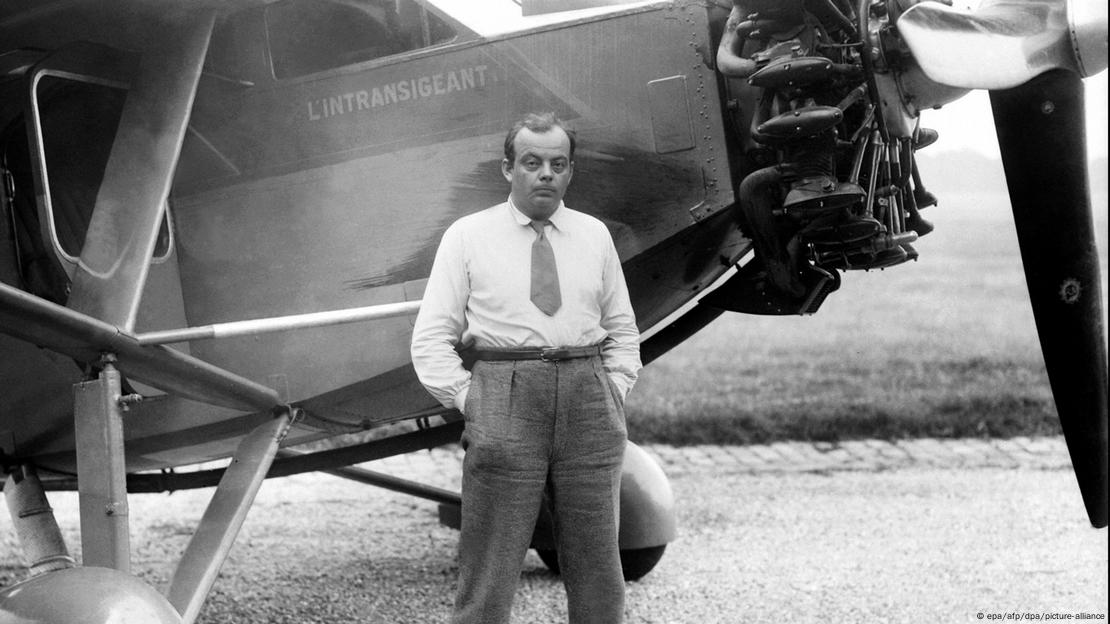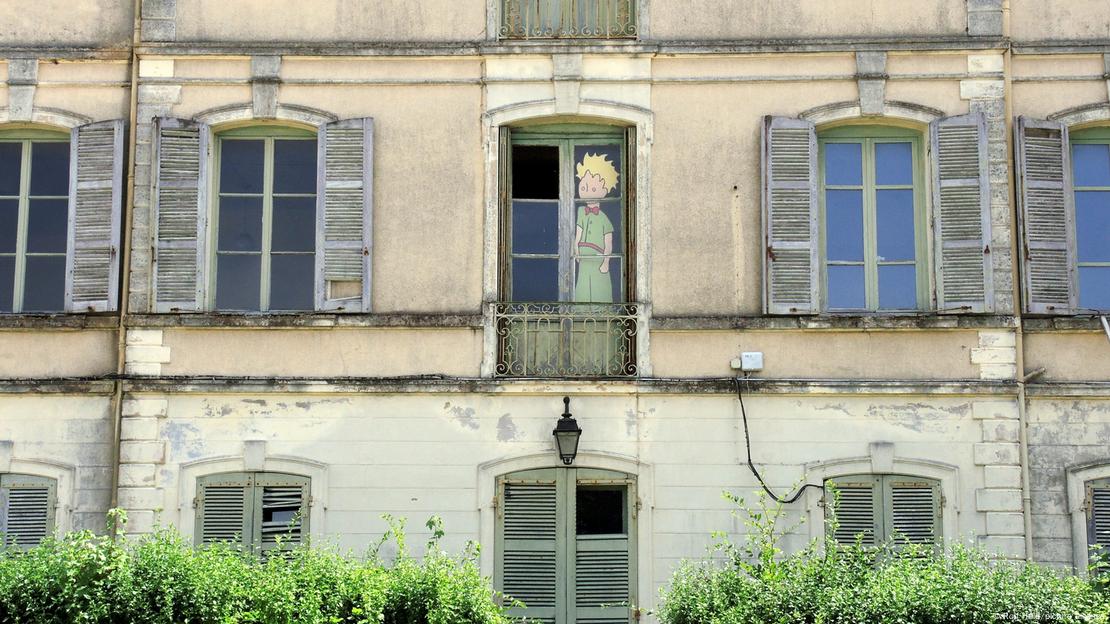'The Little Prince' Turns 80

I remember clearly when my mother appeared in my room one evening with "The Little Prince."
"What a great book this must be," I thought, noticing how carefully and precisely she handled and opened it.
And while the drawings of the little boy with the golden, shaggy hair and the green outfit piqued my interest, I found the story disturbing.
Allow me to explain. The tiny planet seemed like a terrible prison. And that strange, spiteful rose — why does the litlle prince like it so much? And why does he make friends with a fox and then leave him?
As my mother placidly read the short chapters aloud, I didn't dare say how uncomfortable I found the story. While one of the world's most famous storybook heroes was celebrated with mugs, puzzles, T-shirts, and film adaptations, I kept my distance from this strange alien child.
Second chance brings back memories
"The Little Prince" is about a boy who lives on a very small planet together with a demanding rose, two active volcanoes, an extinct volcano, and baobab seedlings. He doesn't get on with the flower; the rose is grumpy and ingratiating. So he decides to go on a journey, exploring seven planets. The last stop is Earth, where he meets a pilot who has crash-landed in the desert.
![]()

The simple watercolors that illustrate "The Little Prince" have captivated the imagination of many readersImage: Dennis Van Tine/abaca/picture alliance
Now, 80 years after its first publication, I wanted to give this modern fairy tale another chance. The 27 short chapters made quick reading and this time the simple language resonated, as did the unpretentious, watercolors. Slowly, I realized I had been misled as a child.
It is not a children's fairy tale at all; rather a reminder of the child in all of us. The book deals with the really big questions, such as love, loneliness and death, that adults ask themselves. No wonder, then, that as an elementary school child I clearly felt that something important was being discussed here, something that I was not able to grasp given my tender years. The seriousness had once frightened me, but now I felt enlightened.
"The Little Prince" was by the passionate aviator Antoine de Saint-Exupery's last book. It was published in New York in 1943 and by the time the French edition came out, three years later, the celebrated author, who was born in Lyon in 1900, had disappeared. He failed to return from a reconnaissance flight over the Mediterranean in 1944, during World War II.
Author and professional pilot
Saint-Exupery's flying career began with sightseeing flights over Paris for tourists. In the 1920s, he flew the Toulouse-Casablanca-Dakar route, eventually becoming the chief of an airfield in southern Morocco, which was under Spanish control at the time. He often rescued colleagues who had made emergency landings in the Sahara desert.
He then moved to Argentina in 1929 and piloted night mail planes. Later, he repeatedly tried to break records and survived two crashes between Paris and Saigon and New York and Tierra del Fuego. When World War IIbroke out, he joined the French Air Force and fought against the German Wehrmacht. Not only does his life as a pilot read like an adventure story, Saint-Exupery also wrote a number of books. However, though he was awarded many literary prizes, he always saw himself first and foremost as a professional pilot, with writing being merely a pastime.
![]()

Antoine de Saint-Exupery was a professional pilot who said writing was a hobbyImage: epa/afp/dpa/picture-alliance
"The Little Prince" disappointed readers at first. Yet, it also immortalized part of its author's life. Like the narrator, Saint-Exupery had also once crashed over a desert and had to survive for days without drinking water until he was rescued.
Few would have imagined that the book would be so successful, let alone that it would go on to become not only the author’s most popular work, but also France'sbest-selling book.
Over 200 million copies of "The Little Prince" are estimated to have been sold. The book has been translated into around 340 languages and dialects, including those of the Inuit, Tuareg and Maya, as well as into Klingon from the TV series "Star Trek."
Ode to the imagination
"Draw me a sheep," is the first thing the little prince says to the crashed pilot. In response, the latter says: "When a mystery is too overpowering, one dare not disobey. Absurd as it might seem to me, a thousand miles from any human habitation and in danger of death, I took out of my pocket a sheet of paper and my fountain-pen." The pilot draws three sheep, and all of them are rejected. Exasperated, he finally draws a box and says: "The sheep you asked for is inside."
To his great astonishment, the strange boy is delighted.
What nonsense, I thought to myself when I was a kid. Why doesn't he draw the sheep the way the prince asked? I could not grasp the genius of these lines. My childish imagination was strong, but I appreciated correctness and details when a book was read to me. Today, this passage speaks to me: It is an ode to imagination, to unprejudiced childlike clarity.
"Grown-ups never understand anything by themselves, and it is tiresome for children to be always and forever explaining things to them," Saint-Exupery writes in his first chapter.
'It is only with the heart that one can see rightly'
The book bubbles over with wisdom. "It is only with the heart that one can see rightly; what is essential is invisible to the eye" is probably the most famous quotation and has since ended up in numerous poetry albums or emblazoned across the walls of yoga studios around the world.
![]()

"The Little Prince" is recognizable all over the worldImage: Rolf Haid/picture alliance
In addition to thoughts on love, friendship and death, the fairy tale also contains social criticism. The little prince travels to six planets before he arrives on Earth. On each asteroid, he experiences surreal encounters: A monarch seeking subjects; a drunkard who drinks in order to forget that he drinks too much; someone who turns street lamps on and off in a place that experiences 1,440 sunsets over a 24-hour period; a vain man who wants to be admired; a geographer who explains the world but has not seen it; a businessman who thinks he owns the stars.
My French teacher particularly liked the last one. Of course, we read "Le Petit Prince" in French in class. I didn't like my French teacher; he was a mean, grim-faced man who obviously didn't like children. But while reading about the number-obsessed businessman who was incapable of doing anything else because he was so busy counting stars, even this teacher suddenly seemed endearing. As if he wanted to give us students something. A life lesson. Or perhaps show us his regret: What happened to my childhood dreams?
"All grown-ups were once children - although few of them remember it," Saint-Exupery writes at the very beginning of his fairy tale. "The Little Prince" reminds us of the feeling of childhood perhaps more than any other book — and perhaps that's why it has been a bestseller around the world for 80 years.
This article was originally published in German.
Get the latest reports & analysis with people's perspective on Protests, movements & deep analytical videos, discussions of the current affairs in your Telegram app. Subscribe to NewsClick's Telegram channel & get Real-Time updates on stories, as they get published on our website.














